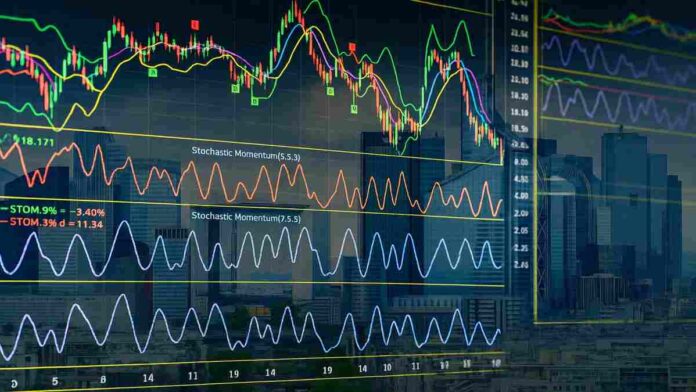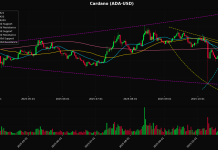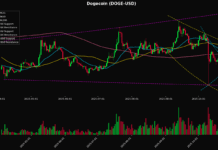Picture a drag racer flooring the pedal at the green light—tires screech, engine roars, and the car surges ahead in a burst of raw power. Now translate that to Wall Street: Gunning the market is the trading equivalent, where a player unleashes a massive, aggressive order (or series of orders) to deliberately jolt prices in their favor. It’s not subtle arbitrage or patient accumulation; it’s a blitz designed to “gun” the engine of supply and demand, often catching slower participants off-guard. In an era of algorithmic warfare and index fund dominance, this maneuver raises eyebrows—and alarms—over fairness, manipulation, and hidden costs to everyday investors.
The Mechanics: How “Gunning” Works Under the Hood
At its core, gunning exploits market impact—the ripple a big trade creates. A trader “guns” by:
- Blasting Volume: Dumping (or hoovering up) shares rapidly via market orders or iceberg algorithms that mask size but hammer depth.
- Triggering Cascades: The initial move spooks algos, stop-losses, or momentum chasers, amplifying the swing.
- Exiting the Smoke: Predators reverse once panic peaks, pocketing the spread.
| Scenario | Tactic | Outcome |
|---|---|---|
| Bear Raid | Gun sells to crash a stock below key levels. | Triggers stops; buys back cheaper. |
| Pump Prep | Gun buys ahead of news/rebalance. | Inflates price for index fund flows. |
| Liquidity Probe | Gun small lots to test depth. | Reveals hidden orders for bigger ambush. |
Classic example: The 2010 Flash Crash. HFTs “gunned” E-Mini S&P futures with a 75,000-contract sell blitz in minutes, cratering prices 9% before rebound. Regulators pinned it on a mutual fund’s algo gone wild, but predators piled on, widening the plunge.
Ties to Index Funds: The Passive Prey in the Crosshairs
Index funds are prime targets—their rebalances are calendar-clockwork. Gunning shines during:
- Russell Recons: Traders gun deletions pre-close, tanking prices 5-10% for funds forced to sell.
- ETF Creation/Redemption: Authorized Participants (APs) gun underlying baskets to arbitrage NAV premiums, but HFTs front-run the signal.
- Quarter-End Window Dressing: Managers gun winners to juice marks; passives absorb the volatility tax.
A 2022 study estimated gunning-style aggression adds 0.3-0.8% annual drag to small-cap index trackers via widened spreads and slippage. It’s predatory trading’s louder cousin—less stealth, more shock and awe.
Real-World Firepower: Cases That Lit Up the Tape
- GameStop 2021: Short-squeeze gunning by retail hordes via RH apps reversed on hedge funds; prices rocketed 1,900% in weeks.
- VW 2008 “Porsche Squeeze”: Porsche gunned VW shares to corner shorts, briefly making it the world’s priciest stock at €1,005.
- Crypto Flash Events: Binance whales gun BTC with $100M+ orders, triggering liquidations—e.g., May 2021’s 30% wipeout.
X traders dub it “gamma gunning” in options: Dealers gun deltas to pin/break strikes, squeezing vol.
Regulatory Recoil: Is Gunning Legal?
Mostly yes—if not manipulative. SEC Rule 10b-5 bans “deceptive” intent, but pure aggression? Fair game in Reg NMS’s maker-taker world. Post-Flash Crash circuit breakers (5-20% halts) blunt the blast, yet micro-gunning persists in dark pools. Europe’s MiFID II caps “excessive” orders, but enforcement lags.
Educator’s Shield: Defending Against the Gunfire
- Trade Mid-Day: Avoid open/close gunning frenzies.
- Limit Orders Only: Never market-order into volatility.
- VWAP/TWAP Algos: Slice orders to mimic, not fight, the gun.
- Broad Indices: S&P 500 liquidity absorbs shots better than niche ETFs.
- Monitor Gamma Exposure (GEX): Tools like SpotGamma flag dealer gunning risks.
Gunning the market is trading’s nitro boost—thrilling for the driver, terrifying for the pedestrian. In passive-heavy portfolios, it’s a volatility tax you pay without pulling the trigger. Stay indexed, but trade smart: The market’s a racetrack, not a shooting range.
Disclaimer
The content on MarketsFN.com is provided for educational and informational purposes only. It does not constitute financial advice, investment recommendations, or trading guidance. All investments involve risks, and past performance does not guarantee future results. You are solely responsible for your investment decisions and should conduct independent research and consult a qualified financial advisor before acting. MarketsFN.com and its authors are not liable for any losses or damages arising from your use of this information.




